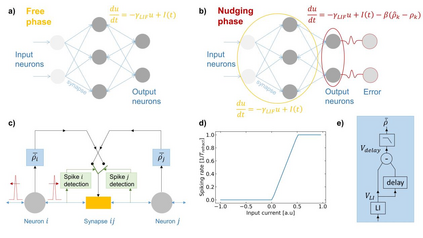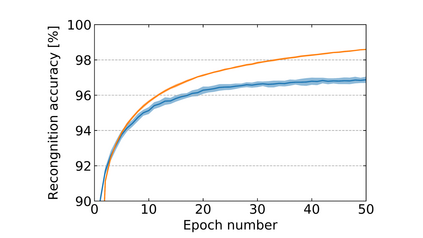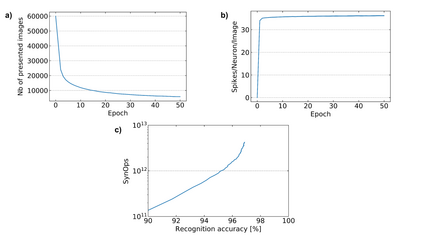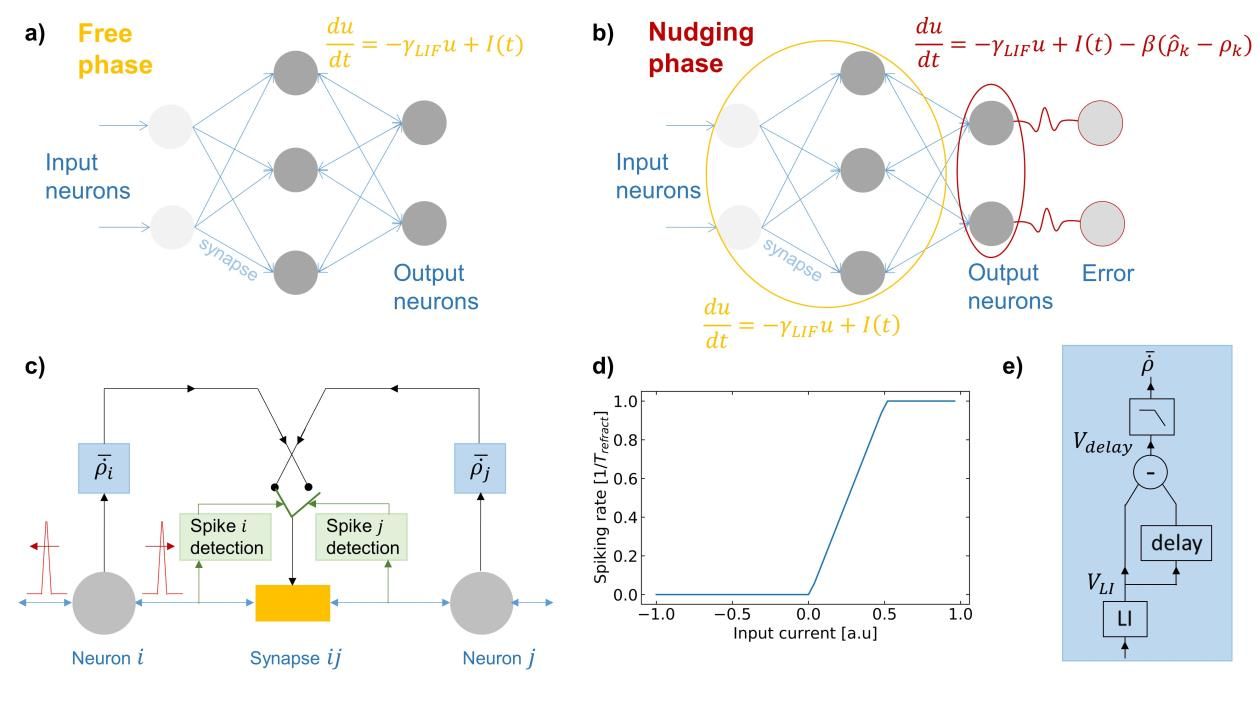Finding spike-based learning algorithms that can be implemented within the local constraints of neuromorphic systems, while achieving high accuracy, remains a formidable challenge. Equilibrium Propagation is a promising alternative to backpropagation as it only involves local computations, but hardware-oriented studies have so far focused on rate-based networks. In this work, we develop a spiking neural network algorithm called EqSpike, compatible with neuromorphic systems, which learns by Equilibrium Propagation. Through simulations, we obtain a test recognition accuracy of 97.6% on MNIST, similar to rate-based Equilibrium Propagation, and comparing favourably to alternative learning techniques for spiking neural networks. We show that EqSpike implemented in silicon neuromorphic technology could reduce the energy consumption of inference and training respectively by three orders and two orders of magnitude compared to GPUs. Finally, we also show that during learning, EqSpike weight updates exhibit a form of Spike Timing Dependent Plasticity, highlighting a possible connection with biology.
翻译:找到在神经形态系统当地限制范围内可以实施的基于峰值的学习算法,虽然其精确性很高,但仍然是一项艰巨的挑战。 平衡性推进是支持性调整的一个很有希望的替代方法,因为它只涉及当地的计算,但硬件导向研究迄今为止侧重于基于比率的网络。 在这项工作中,我们开发了一个名为EqSpike的跳跃性神经网络算法,它与神经形态系统平衡性推进系统相兼容。通过模拟,我们获得了MNIST97.6%的测试识别精度,这类似于基于比率的平衡性促进性调整,并且优于跳动神经网络的替代学习技术。我们表明,在硅神经形态技术中实施的EqSpike可以分别减少与GPUs相比的三级和两级的推断和培训的能量消耗量。 最后,我们还表明,在学习过程中,EqSpike重重量更新显示,在MNISTS上展示了一种丝定调调度的可依赖性可塑性,强调与生物学可能的联系。











